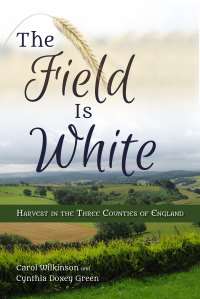Wilford Woodruff’s Mission to the Three Counties
Carol Wilkinson and Cynthia Doxey Green
Carol Wilkinson and Cynthia Doxey Green, “Wilford Woodruff's Mission to the Three Counties,” in The Field Is White, Carol Wilkinson and Cynthia Doxey Green (Provo, UT: Religious Studies Center; Salt Lake City: Deseret Book, 2017), 40-56.
As chapter 1 recounts, the first group of Latter-day Saint missionaries to go to England arrived in Liverpool in July of 1837. They began their work in the Preston, Lancashire, area, later expanding north and south. At the time of the apostolic mission to Great Britain in 1840, when eight of the Twelve were in the British Isles at same time, the missionaries were able to travel to various parts of the country, creating more branches and strengthening those already organized. Wilford Woodruff and John Taylor were the first of the Quorum of the Twelve to arrive in Liverpool, landing on 11 January 1840.[1]
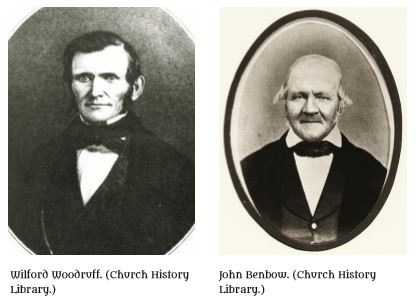
These Apostles began their efforts by splitting into groups with other missionaries and going to a variety of places. Elder Woodruff and his companion, Theodore Turley, headed south to Staffordshire, to the area known as the Potteries because it was a center of ceramic production. Preaching by other American missionaries and British members had opened the work in that area, and Elder Woodruff was able to preach and to baptize several members. He soon sent Elder Turley to the Birmingham area, remaining in the Potteries with Elder Alfred Cordon.[2]
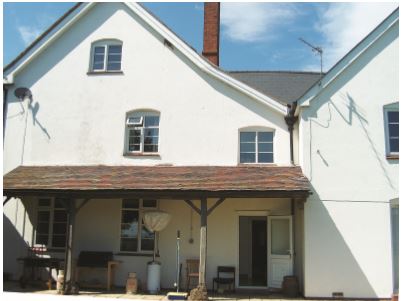 Hill Farm, Herefordshire. (Photo by Cynthia Doxey Green.)
Hill Farm, Herefordshire. (Photo by Cynthia Doxey Green.)
Despite the opposition of local clergy, Elder Woodruff had reasonable success in the area of Hanley, Staffordshire. On his birthday, 1 March 1840, while preaching to a large congregation, he announced that he would be leaving the area, much to the group’s surprise. Later in his life, he described his subsequent actions thus: “In the morning, I went in secret before the Lord, and asked Him what His will was concerning me. The answer I got was that I should go to the south; for the Lord had a great work for me to perform there, as many souls were waiting for the word of the Lord.”[3] Elder Woodruff discussed his plans with his friends William and Ann Benbow, recent converts who lived in Hanley. William suggested that Elder Woodruff should visit his brother John in Herefordshire. William offered to pay his way and accompany him there.[4]
Wilford Woodruff's Meeting with the United Brethren
The Lord had directed Elder Woodruff to go south. Through the instrumentality of William Benbow, Woodruff found the exact area where he needed to go. John Benbow was a member of Thomas Kington’s United Brethren group who were seeking truth and enlightenment. Accordingly, on 3 March 1840, Wilford Woodruff and William Benbow, along with Benbow’s young son William, rode an omnibus for twenty-six miles to Wolverhampton. The next day they took a coach for thirty-four miles to Worcester, then walked another sixteen miles to John Benbow’s farm in Castle Frome, Herefordshire. In his journal, Elder Woodruff described John Benbow as a farmer who cultivated about three hundred acres of land.[5]
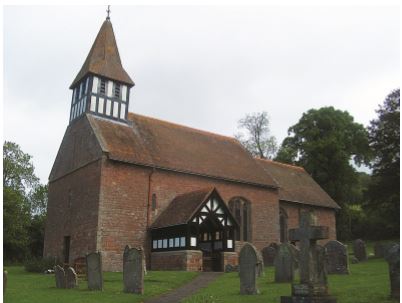 Castle Forme Parish Church. (Photo by Cynthia Doxey Green.)
Castle Forme Parish Church. (Photo by Cynthia Doxey Green.)
John Benbow and his associates in the United Brethren were “in a preparation to hear the word” like the poor of the Zoramites who accepted Alma’s preaching (Alma 32:6). When Woodruff arrived at John Benbow’s farm in early March 1840, he found approximately six hundred members of the United Brethren who had been preaching the gospel of faith, repentance, baptism, and the remission of sins through the Atonement of Jesus Christ, with the desire to be born again through the Holy Ghost.[6] In his recollections of the United Brethren, Job Smith related a story told to him by Thomas Steed. As Susan Brooks and another preacher were conversing on the Sunday prior to Woodruff’s coming, one asked the other, “What are you going to preach today?” The reply was “I don’t know. I have preached all I know. What are you going to preach?” The other said, “I, also, have preached all I know. I hope the Lord will send us light.”[7] The United Brethren were prepared and eager to listen to the words of a missionary from America who claimed to have the fullness of the gospel.
Woodruff described the United Brethren in a letter to the editor of the Millennial Star, dated 9 July 1840: “This people almost universally appeared willing to give heed to the exhortation of Solomon, to hear a matter before they judged or condemned [it]. They opened their doors for me to preach, and searched the Scriptures daily to see if the things which I taught were true; and on finding that the word and spirit agreed and bore record of the truth of the fullness of the everlasting gospel, they embraced it with all their hearts.”[8]
Intense Missionary Activities
When Woodruff arrived at the Benbow home, he first taught the gospel to his hosts, who accepted his words. John and Jane Benbow then invited Woodruff to preach the gospel at their home for others to hear. Their friends and neighbors came to learn from this American missionary who was an Apostle of Jesus Christ. After Woodruff preached the gospel on Thursday, 5 March 1840, he prophetically recorded in his journal, “I spent the day at Mr Benbows & preached at his house & had the testimony that there was many present that would be Saints.”[9] The following day, Elder Woodruff baptized the Benbows and four of their friends. He recalled that he spent the rest of the next day (Saturday) clearing out the pond near the Benbows’ home, where he would perform more baptisms on Sunday.[10]
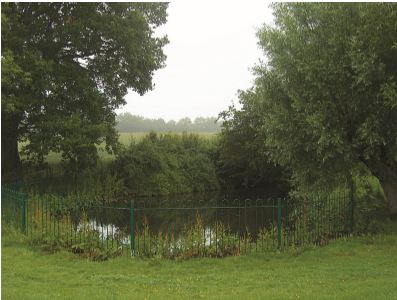 Pond at Hill Farm, the location of many baptisms by Wilford Woodruff. (Photo by Cynthia Doxey Green.)
Pond at Hill Farm, the location of many baptisms by Wilford Woodruff. (Photo by Cynthia Doxey Green.)
By Sunday, word of an American preacher in the area had spread swiftly, and Elder Woodruff preached three sermons in three different locations for a combined total of almost one thousand people. The local Anglican parish church reported only fifteen attendees for that day. Upset by this disparity in attendance, the local rector in the Castle Frome parish sent a constable to arrest Wilford Woodruff as he preached his last sermon of the day at the Benbows’ home. When the constable came forward with his warrant at the beginning of the meeting, Elder Woodruff pointed out that he had a license to preach, just like the rector, but would be willing to speak to the constable after the meeting.[11] Elder Woodruff recalled, “The power of God rested upon me, the spirit filled the house, and the people were convinced.” At the end of the meeting, seven people presented themselves for baptism, including the constable who had planned to arrest Elder Woodruff. [12]
Not giving up on his designs, the parish rector sent two of his church clerks to listen to the next sermon, hoping that they could find something he could use against Elder Woodruff. After listening to the sermon, these clerks also believed the message and desired to be baptized. The rector did not send anyone else to listen to Elder Woodruff. Several other ministers in the area also complained about the Mormon missionaries, asking the archbishop of Canterbury to petition Parliament to stop Elder Woodruff from preaching and “cause [his] religion to cease out of the land.”[13] The Archbishop of Canterbury refused the request, stating that “if [these ministers] had the worth of souls at heart as much as they valued the ground where hares, foxes, and hounds ran, they would not lose so many of their flock.”[14]
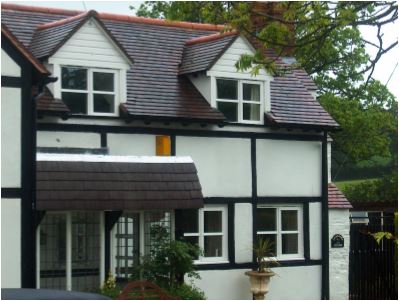 Home of William Simmons in Hawcross, Redmarley D'Abitot, Worcestershire.
Home of William Simmons in Hawcross, Redmarley D'Abitot, Worcestershire.
The community of United Brethren was a fertile ground in which Wilford Woodruff could plant the seed of the restored gospel, from which fruit matured in hours or days for many individuals. In that group, he found many homes and chapels already licensed for preaching, along with many welcoming individuals who desired to hear his words and receive baptism.[15] Within a short time, John Benbow invited Thomas Kington to hear this new gospel message as preached by Elder Woodruff. This was a crucial development in Elder Woodruff’s missionary labors. Thomas Kington, the superintendent and leader of the United Brethren, was willing to listen. Kington’s acceptance of the gospel message was a great blessing to the work. If he had refused to hear Wilford Woodruff and consider the gospel he preached, Kington might have counseled others of the United Brethren to avoid it as well. Elder Woodruff later described their meeting: “Mr. Kington received my testimony and sayings with candor, and carried the case before the Lord, made it a subject of prayer, and asked the Father in the name of Jesus Christ, if these things were true, and the Lord Manifested the truth of it unto him, and he went forth and was baptized, he and all his household. I ordained him an elder, and he went forth and began to preach the fulness of the gospel.”[16]
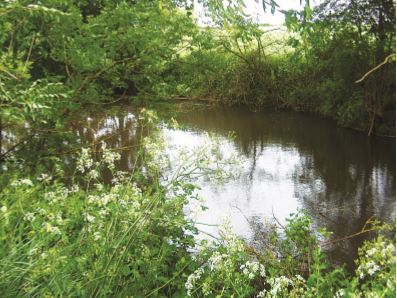 A pond in Hawcross. (Photo by Cynthia Doxey Green.)
A pond in Hawcross. (Photo by Cynthia Doxey Green.)
Thomas Kington’s baptism and his inherent zeal for preaching and teaching helped move the work forward rapidly. Kington gave Wilford Woodruff the “United Brethren Preachers’ Plan,” which provided a systematic method for preaching at their places of worship.[17] Elder Woodruff had already baptized many of the original preachers from the United Brethren; these individuals followed the established preachers’ plan, but preached the restored gospel to their friends and neighbors in place of their previous teachings. Drawing upon the network of family and friends who had been a part of the United Brethren, Wilford Woodruff saw the progress of the work move quickly. By the time of the first conferences in Castle Frome and Gadfield Elm Chapel in June 1840, many preachers from the United Brethren— then ordained to the priesthood as teachers, priests, and some elders— were able to preach and baptize in the surrounding communities.[18]
Inspired Preaching
During this time period, the Book of Mormon had not yet been printed in Great Britain. The only copies available were those carried by the missionaries as they traveled. Elder Woodruff said he “preached unto them the first principles of the gospel, viz., faith in Christ, repentance and baptism for the remission of sins, and the gift of the Holy Ghost by the laying on of hands.”[19] He affirmed, “The Spirit of God accompanied the preaching of the word to the hearts of men. Whole households, on hearing the word, have received it into good and honest hearts, and gone forth and received the ordinances of the gospel.”[20] Elder Woodruff taught by the Spirit, and the Spirit testified of the truthfulness of the restored gospel to the people who heard him.
Job Smith, who was only eleven years old when he first met Wilford Woodruff, recollected:
President Woodruff and Elder Kington arrived at father Bundy’s house in the afternoon of April 8th, 1840. The usual weekly meeting of the United Brethren was on every Wednesday evening at one of the member’s houses a short distance down the street. The member’s name was William Simmons, and the name of the street or hamlet was called Haw Cross, in the parish of Redmarley, County of Worcester. At the usual hour the gentlemen above named with my uncle and aunt Bundy, and myself repaired to the meeting place. Reports had arrived previously of some new and strange things happening at Froom’s Hill [Fromes Hill] and other places in Herefordshire, and the advanced report succeeded in filling the large kitchen to over flowing, many being unable to gain admission.
An anxious audience then listened with open ears and anxious hearts for two hours while the apostle explained the first principles of the gospel together with the manner in which it had been revealed through the ministering of angels to one Joseph Smith, through whom a church had been organized with Apostles, elders, priests and teachers, with all the gifts, healings, and manifestations enjoyed by the ancient church of Jesus Christ in Jerusalem, and other places in the days of the apostles whom Christ himself had ordained.[21]
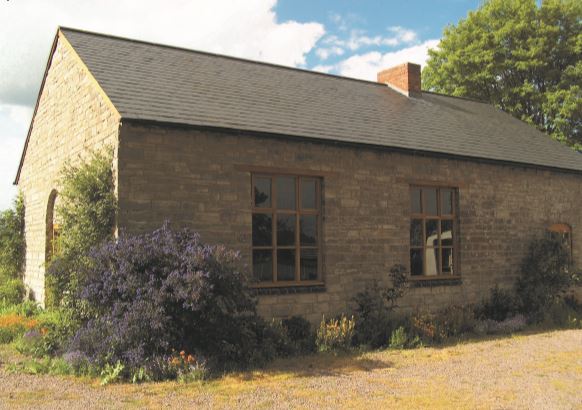 Gadfield Elm chapel, restored. (Photo by Cynthia Doxey Green.)
Gadfield Elm chapel, restored. (Photo by Cynthia Doxey Green.)
Job Smith recorded that after the meeting, many people offered themselves for baptism. The group went to a nearby pond for the baptisms, but because of a mob that had gathered, they had to postpone the ordinances until midnight, hoping the mob would disperse. The rowdy crowd did not leave. Wilford Woodruff’s journal recorded the event: “I went down into the water & Baptized 5 persons in the midst of a shower of stones flung at me by the mob, & while they were pelting my Body with stones one of which hit me in the top of my head which nearly knocked me down into the water with the man that I was Baptizing but the Lord saved me from falling & I continued untill I had closed my Baptizing & my mind was stayed on God.”[22]
Job Smith wrote that after this experience, he spoke with Elder Woodruff. “I also asked him if I was old enough to be baptized, which he answered in the affirmative, and when shaking hands with him I asked him if there were any of the apostles now in England, to which he replied, ‘You have hold of one of their hands.’ Subsequently the remainder of the members of the [United Brethren] were baptized.”[23] Although Job Smith stated that all of the United Brethren were baptized, Wilford Woodruff corrected this to “except one person.”[24] One of the original United Brethren preachers, Edward Phillips, mentioned the one preacher who was not baptized as being Philip Holdt.[25]
These statements might create an impression that baptizing the remaining members of the United Brethren was a routine matter, as if they all became model Church members the moment they heard Wilford Woodruff’s preaching. However, the process of converting the group may not have been as simple as it sounds. In a statement to Willard Richards, Elder Woodruff mentioned that he had to contend with some unusual behaviors in the new converts. He employed one of his oft-used fishing analogies to describe his approach:
You see, by this time, Brother Richards, I am not idle, but have much to do, and need much wisdom from God to do it well; for it is the strongest fishing that I have ever done. I expect that while gathering the salmon, I will get from among them some eels and snakes, for some already, after being baptized, went pitching and bending like a porpoise and jumped and rolled like a hen with their head cut off, manifesting every kind of spirit, except that of order; and if ever an Elder had any trimming to do, I expect to have my share of it by and by, for in doing such a rapid work as this, I have to become all things to all men; I cannot get time to do much trimming as yet; in fact, some have, before I was aware of it, bounded into the water to me stark naked, excepting a loose cloth round their legs, but I put a stop to all disorder as fast as possible, and again I am having a mighty struggle against this Methodist power of falling down like a dead man, stiff as a stake, which is in some of the preachers as well as the people. I have to handle all these things in wisdom. [26]
In short, although the United Brethren were prepared to hear and accept the preaching of Wilford Woodruff, they perhaps were not equally ready to give up some of the behaviors and traditions of worship they had learned during their time as Primitive Methodists.
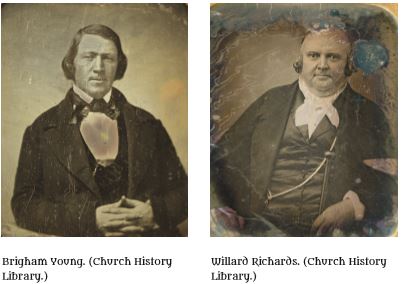
Arrival of Brigham Young and Willard Richards
Wilford Woodruff left the Herefordshire area for a few days while he traveled to Preston for a Church conference on 15 April 1840, where he was able to reunite with his fellow Apostles. During the conference, he shared his experiences with the United Brethren and described the great success he was having in that part of the country. He reported that within one month and five days of preaching in that area, he had baptized Thomas Kington, the superintendent of the United Brethren, along with 48 of their preachers and 112 of their members. Because this group of Saints had previously licensed their homes as places of worship, along with the chapel at Gadfield Elm, all of these established meeting places were now available to Wilford Woodruff and other missionaries. He petitioned help from some of his brethren to return with him to that part of the vineyard where so many people were interested and ready to be baptized. After a few days, Brigham Young accompanied Wilford Woodruff to Herefordshire, and Willard Richards followed a short time later.[27]
Under the leadership of Wilford Woodruff, Willard Richards, and Brigham Young, supported by the local priests and elders, the work moved forward rapidly. The three brethren of the Twelve met together on two significant occasions while in the Three Counties. The first was on 18 May at a feast day in Dymock, at the home of Thomas Kington. Elder Woodruff wrote that the feast day “had been a custom among the United Brethren. But as they now were all receiving the fulness of the gospel they had become Saints.”[28] Although there is no record of exactly where Thomas Kington lived in Dymock, either the home or the surrounding property must have been large enough to accommodate one hundred people.
After the meal, Brigham Young spoke to the assembled gathering. Three individuals were confirmed, and the first miraculous healing in the Three Counties region took place. Mary Pitt, Thomas Kington’s sister-in-law, “had not walked except on crutches for 11 years” and had been “confined 6 years to her bed” because of problems with her spine.[29] Wilford Woodruff related that she was healed by the laying on of hands and that when he saw her a couple of weeks later on 3 June, “her ancle [sic] bones received strength & she now walks without the aid of crutch or staff.”[30]
![]() View from Herefordshire Beacon. (Photo by Cynthia Doxey Green.)
View from Herefordshire Beacon. (Photo by Cynthia Doxey Green.)
The second important meeting of Brigham Young, Wilford Woodruff, and Willard Richards occurred on 20 May 1840. The three walked up to the top of Herefordshire Beacon, one of the major hills in the Malvern range. After a prayer, they counseled together and felt inspired that Brigham Young should leave immediately for Manchester to publish three thousand copies of the Book of Mormon, along with a collection of hymns. They had collected money from the local Saints for these publications.[31] The biggest donations came from John Benbow, who contributed £200, and Thomas Kington, who provided £100. [32] Brigham Young left to go north after the meeting atop Herefordshire Beacon, but Willard Richards continued to preach in the Three Counties area until he and Wilford Woodruff went north for a general conference in Manchester, held on 6 July.[33]
Continued Growth
Demonstrating the rapid growth of the Church in the Three Counties area, the first Church conferences were held on 14 June 1840, at the Gadfield Elm Chapel in Eldersfield, Worcestershire, and on 21 June, at Stanley Hill near Castle Frome, Herefordshire. At these conferences, the branches were organized into two conferences: the Bran Green and Gadfield Elm Conference, consisting of twelve branches, and the Frome’s Hill Conference, which consisted of nineteen branches.[34] In his journal, Wilford Woodruff praised the Lord for his goodness. The Church, at this time, consisted of “more than 500 souls whare a little less than four months since ther was not one to be found or the fulness of the Gospel herd [sic].”[35] The growth of the Church in this area was truly remarkable and significant, due in part to the preparation of the United Brethren and to the tireless efforts of Wilford Woodruff and his companions in preaching the word to the Brethren’s families and friends.
Elder Woodruff traveled through the Three Counties a few more times during the rest of his mission in England in 1840 and 1841. He also labored in London, in the Potteries, and in other places, but the experiences he had in and around the Three Counties made a lasting impression upon him. He was beloved by the people there, many of whom eventually emigrated to Nauvoo and later to Utah. Many years later, as Elder Woodruff looked back on his work among the United Brethren, he recalled, “They, as a people, were prepared for the word of the Lord, and I wanted to catch them in the gospel net.”[36] His mission to the Three Counties demonstrates how the Lord can guide and direct his servants to the people who have been prepared to hear the message of the gospel. His service in the Three Counties provides an example of the faithfulness of a servant of God who preached the gospel with all the energy of his heart, fulfilling the calling of an Apostle to testify of the divinity of Jesus Christ.
Notes
[1] James B. Allen, Ronald K. Esplin, and David J. Whittaker, Men with a Mission, 1837–1841: The Quorum of the Twelve Apostles in the British Isles (Salt Lake City: Deseret Book, 1992), 80.
[2] Allen, Esplin, and Whittaker, Men with a Mission, 118–19.
[3] Woodruff, Leaves from My Journal, 124.
[4] Allen, Esplin, and Whittaker, Men with a Mission, 121.
[5] Wilford Woodruff’s Journal, 1:423 (3–4 March 1840).
[6] James Palmer, “James Palmer Reminiscences, ca. 1884–98,” 5, MS 1752, Church History Library, Salt Lake City.
[7] Job Smith, “The United Brethren,” Improvement Era, July 1910, 823.
[8] Wilford Woodruff, “Correspondence,” Millennial Star 1, no. 3 (July 1840): 72.
[9] Wilford Woodruff’s Journal, 1:423–24 (5 March 1840).
[10] Wilford Woodruff’s Journal, 1:424 (7–8 March 1840).
[11] Woodruff, Leaves from My Journal, 128–29.
[12] Woodruff, Leaves from My Journal, 129.
[13] Wilford Woodruff’s Journal, 1:430 (29 March 1840).
[14] Woodruff, Leaves from My Journal, 130.
[15] Woodruff, Leaves from My Journal, 126–27.
[16] Wilford Woodruff, “Correspondence,” Millennial Star 1, no. 3 (July 1840): 72.
[17] “United Brethren Preachers’ Plan of the Frooms Hill Circuit, 1840,” 248.6 U58p 1840, Church History Library, Salt Lake City.
[18] Wilford Woodruff’s Journal, 1:457–60 (14 June 1840), 463–67 (21 June 1840). In the Conference Minutes recorded by Wilford Woodruff, we find the names of presidents of branches, along with others who were sustained to be ordained as priests and elders. Many of them are also found as preachers on the United Brethren preachers’ plan.
[19] Wilford Woodruff, “Correspondence,” Millennial Star 1, no. 3 (July 1840): 72.
[20] Woodruff, “Correspondence,” Millennial Star 1, no. 4 (August 1840): 82.
[21] Job Taylor Smith, “Job Smith Autobiography, circa 1902,” 1–2, MS 4809, Church History Library, Salt Lake City.
[22] Wilford Woodruff’s Journal, 1:433 (9 April 1840). Woodruff records this event as happening on 9 April 1940, but Job Smith records it as 8 April, 1840. Woodruff mentions that he spoke “to a vast mass of human beings & not a quarter of the people could not get in to the house.”
[23] Smith, “Autobiography,” 2.
[24] Woodruff, Leaves from My Journal, 131.
[25] Edward Phillips, “Biographical Sketches of Edward and Hannah Simmonds Phillips, 1889, 1926, 1949,” 1, MS 11215, Church History Library, Salt Lake City.
[26] British Manuscript History, Part 1, 1837–40, Wednesday, 25 March 1840, 1–2, LR 1140, Series 2, Reel 7, Church History Library, Salt Lake City.
[27] Wilford Woodruff’s Journal, 1:439–40 (15–16 April 1840).
[28] Wilford Woodruff’s Journal, 1:450 (18 May 1840).
[29] Wilford Woodruff’s Journal, 1:450 (18 May 1840) and 1:455 (3 June 1840).
[30] Wilford Woodruff’s Journal, 1:455 (3 June 1840).
[31] Wilford Woodruff’s Journal, 1:451 (20 May 1840).
[32] Wilford Woodruff’ Journal, 1:449 (14 May 1840), 451 (19 May 1840).
[33] Woodruff, “Correspondence,” Millennial Star 1, no. 4 (August 1840): 83.
[34] Wilford Woodruff’s Journal, 1:457–60 (14 June 1840), 463–67 (21 June 1840). These branches closely parallel the locations where the United Brethren had established licensed places of worship, as found in their preachers’ plan.
[35] Wilford Woodruff’s Journal, 1:462–63 (20 June 1840).
[36] Wilford Woodruff, in Journal of Discourses (London: Latter-day Saints’ Book Depot, 1854–86), 18:124.
